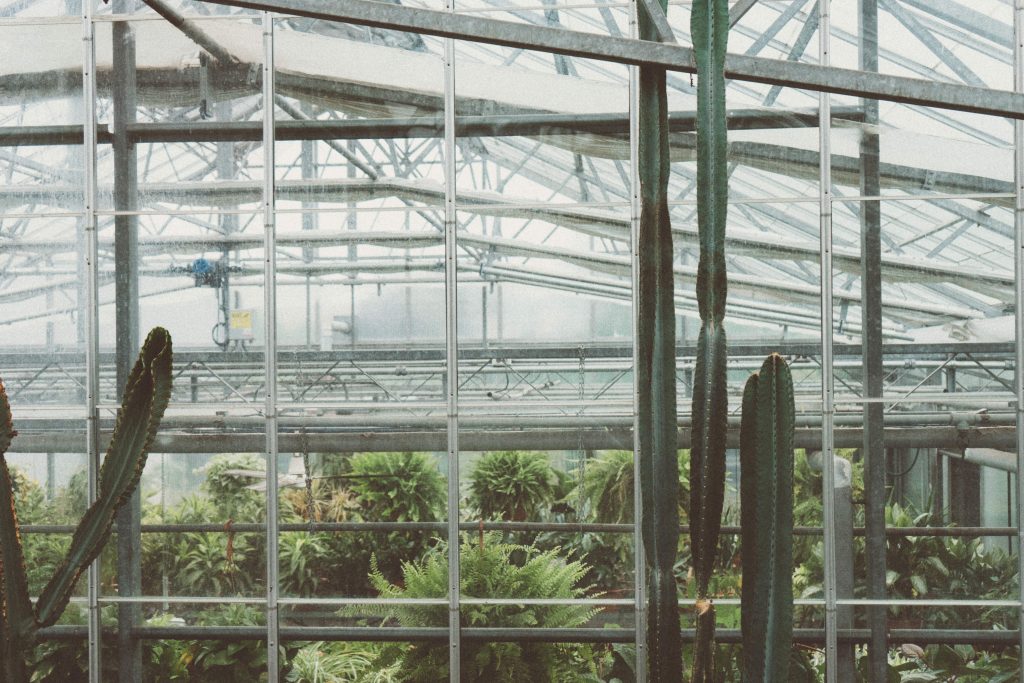
The engineering behind the greenhouses – ventilation
Theory of operation
The warmest temperature in a greenhouse occurs because the incident solar radiation passes through the transparent roof and walls and is absorbed by the soil, earth and contents, which are heated. Since the structure is not open to the atmosphere, the heated air cannot escape by convection, so that the temperature inside the greenhouse increases. It’s called the Green House Effect.
Quantitative studies suggest that the effect of cooling by infrared radiation is not negligible and may have economic implications in a heated greenhouse. Analysis of the problems of near-infrared radiation in a greenhouse with screens with a high reflection coefficient concluded that the installation of such screens reduced the heat demand by about 8%, and the application of dyes on transparent surfaces has been suggested. Less reflective composite glass or plain glass with less effective but less expensive anti-reflective coating has also saved money.
Ventilation
Ventilation is one of the most important elements of a successful greenhouse. Without proper ventilation, the growing plants in a greenhouse suffer problems. The main objectives of ventilation are to regulate the temperature and humidity to the optimal level, and to ensure the movement of air and thus avoid the accumulation of plant pathogens.
Adequate ventilation is essential to the proper functioning of a greenhouse. The greenhouse ventilation system provides plants with fresh air (CO2), helps control temperature and humidity, and reduces the risk of disease. Greenhouses are generally closed structures that will not be fully ventilated alone. To ensure adequate ventilation in the greenhouse, gardeners must install a passive or electric ventilation system.
Passive ventilation system
A passive ventilation system is a ventilation system without mechanical components. In other words, no electric fan is involved in a passive ventilation system. Instead, the greenhouse is ventilated by convection (the hot air becomes less dense and rises) through the vents. In addition to the vents, the passive ventilation system allows the cold air to enter and hot air to quit as it rises. These intake vents are generally placed at the bottom of the sidewalls of a greenhouse.
The biggest advantage of passive ventilation systems is that they are practically silent. This can be advantageous for a gardener whose greenhouse is connected to his house, and the noise of an electric fan would be a nuisance. The biggest Cons of this particular ventilation system are cost, efficiency and maintenance. In addition, many people do not understand that maintenance is necessary with a passive ventilation system.
The ridge vent must be free of debris and cleaned regularly. In addition, the pistons in the ventilation system must be lubricated. Last but not least, because air is not forced through the greenhouse, a passive ventilation system is not as efficient as a motorized ventilation system. In general, passive ventilation systems are ideal for greenhouses where the noise of an electric fan would be a nuisance.
Powered ventilation systems (PVS)
A motorized ventilation system for a greenhouse is a ventilation system with a motorized fan and intake vents. Cubic feet of greenhouse space will be the determining factor in the sizing of a ventilation system. The minimum objective is to obtain the cubic air volume in less than two minutes. In many cases, a fan will be sized to rotate the air in less than a minute. Rapid rotation makes it easier to control temperature and/or humidity, keeping the greenhouse about 10 degrees cooler than a passive cooling system. The fan must be installed at the top of the wall opposite the intake vents and the screen door.
In other words, the intake vents should be installed on the same wall as the door and the fan should be installed on top of the opposite wall. This ensures that the fresh air entering the greenhouse passes through the greenhouse before it is exhausted. Motorized ventilation systems are generally configured with a thermostatic control that turns on the fan when the set temperature is reached. The intake openings are synchronized with the fan to open at the same time as the fan is activated. To maintain the highest level of performance, the thermostat sensor should be placed at ground level.
In addition to a PVS exhaust/cooling fan, a greenhouse must also be equipped with a circulation fan. Circulation fans provide continuous air movement in the greenhouse which helps maintain uniform temperatures and humidity while increasing the structural integrity of plants (just as the wind strengthens plants in the wild). Greenhouses with circulating fans are the most efficient and effective in maintaining desirable atmospheric conditions.
Whether you choose a passive or electric ventilation system, it is essential to ensure that a greenhouse is well ventilated to create an ideal growing environment for plants. The temperature, humidity and environmental CO2 levels of a greenhouse are determined by the ventilation system. In other words, the ventilation system is one of the most important determinants of plant performance in a greenhouse and must be taken into account by any potential greenhouse gardener.
Read more
https://www.advancingalternatives.com/blog/getting-started-greenhouse-ventilation-systems/
https://www.greenhousecatalog.com/greenhouse-ventilation
2 thoughts on “The engineering behind the greenhouses – ventilation”
Leave a Reply
You must be logged in to post a comment.
Very interesting information!Perfect just what I was looking for!
Thank you very much, Mr Jack Peterson. See other articles also.